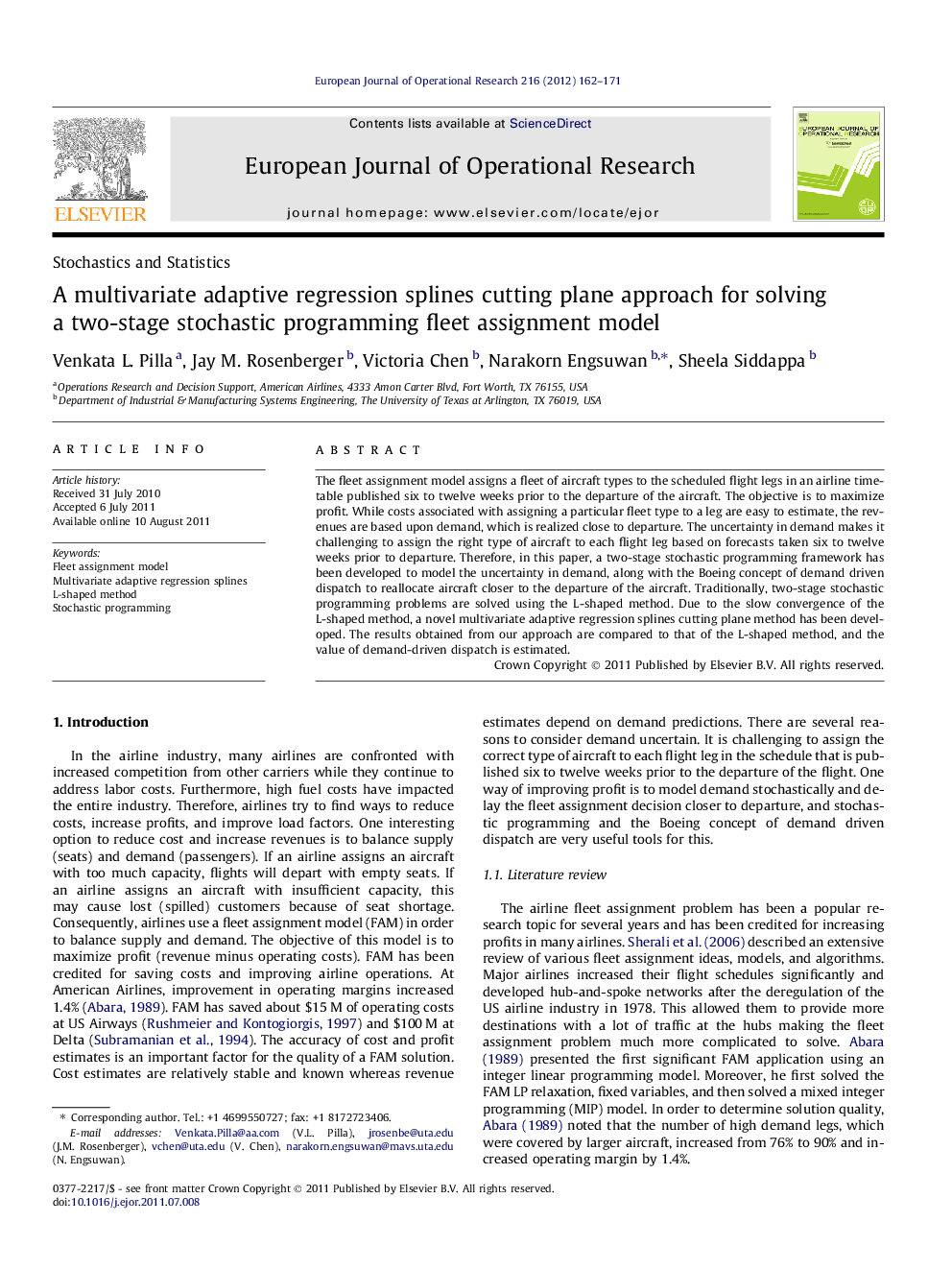| Article ID | Journal | Published Year | Pages | File Type |
|---|---|---|---|---|
| 480205 | European Journal of Operational Research | 2012 | 10 Pages |
The fleet assignment model assigns a fleet of aircraft types to the scheduled flight legs in an airline timetable published six to twelve weeks prior to the departure of the aircraft. The objective is to maximize profit. While costs associated with assigning a particular fleet type to a leg are easy to estimate, the revenues are based upon demand, which is realized close to departure. The uncertainty in demand makes it challenging to assign the right type of aircraft to each flight leg based on forecasts taken six to twelve weeks prior to departure. Therefore, in this paper, a two-stage stochastic programming framework has been developed to model the uncertainty in demand, along with the Boeing concept of demand driven dispatch to reallocate aircraft closer to the departure of the aircraft. Traditionally, two-stage stochastic programming problems are solved using the L-shaped method. Due to the slow convergence of the L-shaped method, a novel multivariate adaptive regression splines cutting plane method has been developed. The results obtained from our approach are compared to that of the L-shaped method, and the value of demand-driven dispatch is estimated.
► We complete DACE based method of Pilla et al. (2008) with our Optimization Phase. ► We revise the two-stage SP FAM formulation, and derive a gradient of the MARS function. ► Using the MARS Cutting Plane Approach showed a reduction in computational effort.
